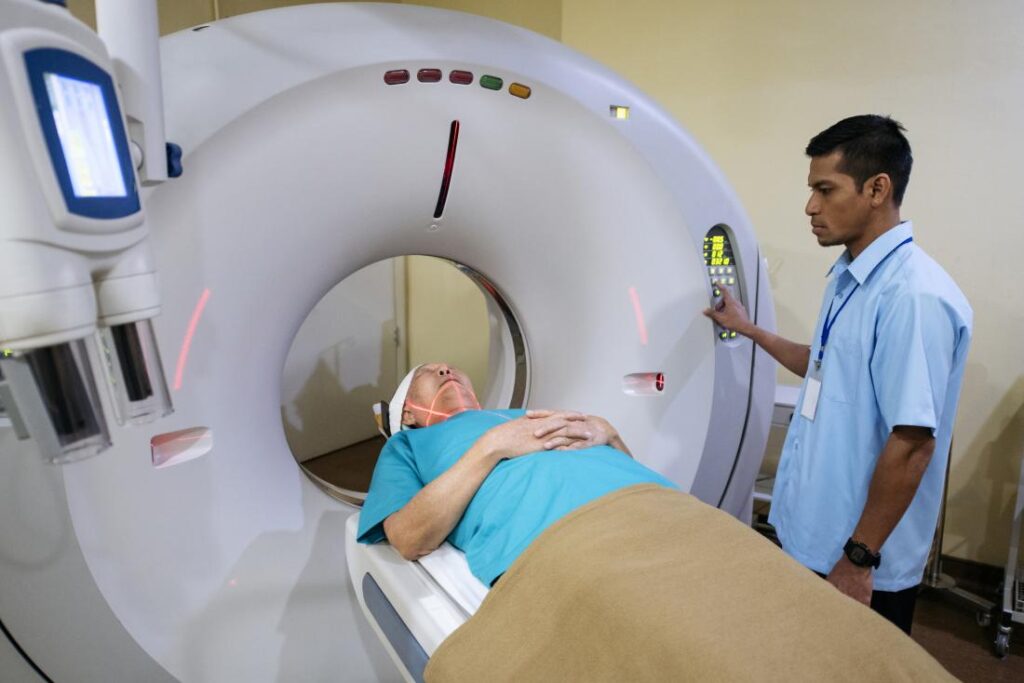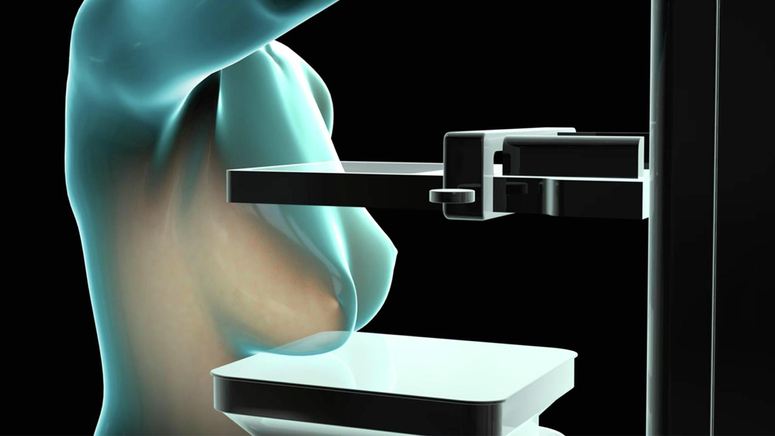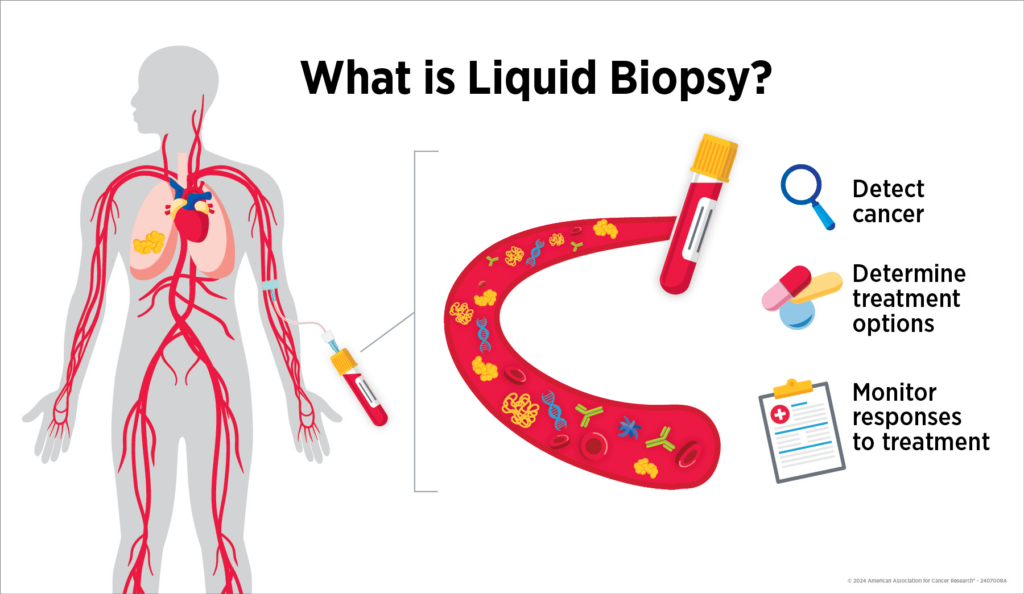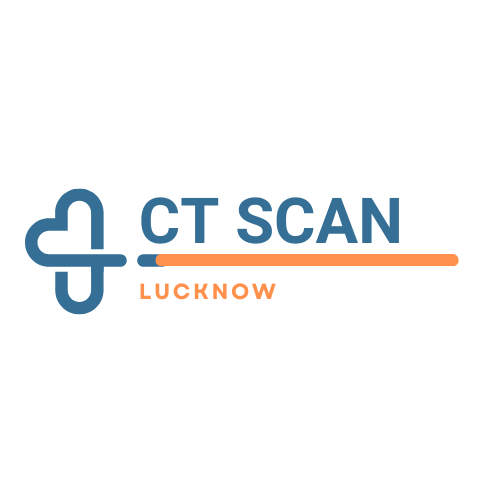Computed tomography, commonly known as CT, is a noninvasive imaging technique that utilizes specialized X-ray equipment to produce detailed images of the body’s internal structures.
These images, often referred to as scans, provide cross-sectional views of organs, bones, and tissues, enabling healthcare professionals to detect abnormalities with precision. Let’s understand if can cancer be detected in CT scan in detail.

How CT Scans Detect Cancer?
CT scans are instrumental in identifying the presence of tumors. By capturing multiple images from different angles, CT technology reconstructs a comprehensive view of the targeted area.
This allows for the detection of both small and large masses that may indicate cancer. For instance, in lung cancer screening, low-dose CT scans have been shown to reduce mortality by identifying early-stage malignancies.
What CT Scan Can Detect?
While CT scans are pivotal in cancer detection, their applications extend to various medical conditions, including:
- Circulatory System Diseases: Identifying issues such as coronary artery disease, aneurysms, and blood clots.
- Spinal Conditions: Assessing abnormalities or injuries in the spinal column.
- Kidney and Bladder Stones: Detecting the presence of calculi within the urinary system.
- Inflammatory Diseases: Evaluating conditions like ulcerative colitis and sinusitis.
- Trauma Assessment: Examining head, skeletal system, and internal organs injuries.
These diverse applications highlight the versatility of CT imaging in medical diagnostics.
Alternative Tests and Scans for Cancer Detection
While CT scans are a valuable tool in cancer detection, several other diagnostic methods are employed to identify malignancies:
Magnetic Resonance Imaging (MRI)
Utilizes powerful magnets and radio waves to generate detailed images of internal structures. MRI is particularly useful for imaging soft tissues, making it effective in detecting brain, spinal cord, and musculoskeletal tumors.
Mammography
A specialized x-ray technique designed to detect abnormalities in breast tissue. Regular mammograms are essential for early detection of breast cancer, even before symptoms develop.

Positron Emission Tomography (PET) Scan
Involves injecting a small amount of radioactive material into the bloodstream to highlight areas of high metabolic activity, often indicative of cancer cells. PET scans are commonly used in conjunction with CT scans to provide comprehensive information about a tumor’s location and metabolic activity.
Ultrasound
Employs high-frequency sound waves to produce images of internal organs and tissues. Ultrasound is often used to evaluate lumps or masses detected during physical examinations and can help distinguish between solid tumors and fluid-filled cysts.
Biopsy
Involves the removal of a small tissue sample for microscopic examination. A biopsy is the definitive method for diagnosing cancer, as it allows for the direct observation of cancerous cells.
Blood Tests
Certain cancers release substances known as tumor markers into the bloodstream. Blood tests can measure these markers to aid in diagnosis. Additionally, complete blood counts can detect abnormalities in blood cells that may indicate blood-related cancers.
Liquid Biopsy
A minimally invasive test that detects circulating tumor DNA or cells in the blood. This method can provide information about the genetic makeup of tumors and monitor treatment responses.

Frequently Asked Questions
Can a CT scan detect all types of cancer?
CT scans are effective in detecting many types of cancer, especially those involving solid tumors like lung, liver, and pancreatic cancers. However, they may be less effective for cancers like multiple myeloma or certain lymphomas.
Are there risks associated with CT scans?
CT scans involve exposure to ionizing radiation, which carries a slight risk of potential harm. However, the diagnostic benefits often outweigh these risks. Discuss any concerns with your healthcare provider.
How should I prepare for a CT scan?
Preparation may vary based on the scan type. You might need to avoid eating or drinking for a few hours prior. Inform your doctor of any allergies, especially to contrast materials, and disclose any medications you’re taking.
Is a CT scan the same as an MRI?
No, while both are imaging techniques, CT scans use x-rays to produce images, whereas MRI uses magnetic fields and radio waves. The choice between them depends on the specific medical situation.
Can I undergo a CT scan if I’m pregnant?
It’s crucial to inform your healthcare provider if you’re pregnant or suspect you might be. They’ll assess the necessity of the scan and may consider alternative imaging methods to minimize any potential risks to the fetus.
CT scans are a vital tool in the early detection and diagnosis of cancer, among other medical conditions. Their ability to provide detailed images of the body’s internal structures aids healthcare professionals in making informed decisions regarding patient care.
